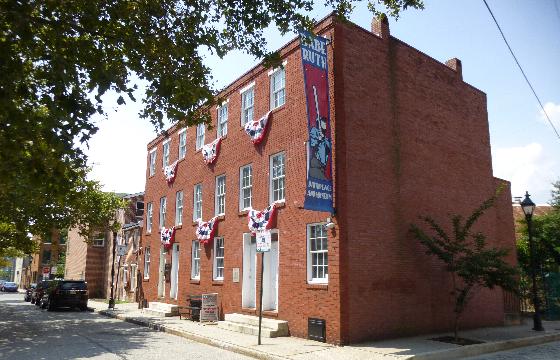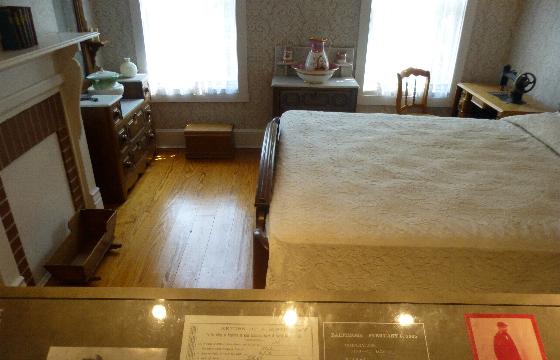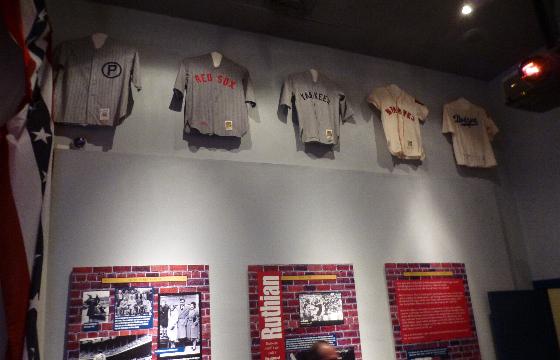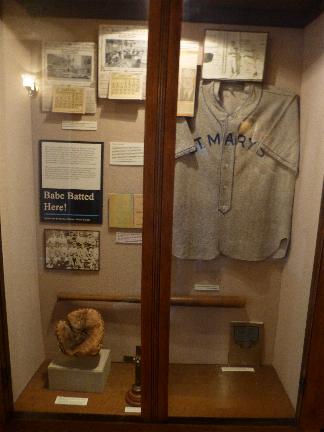 The row house in which Babe Ruth was born, Aug-2014. |
 This room, where Ruth was born, is decorated with period pieces. |
 Other rooms in the house hold displays, some of which feature rotating exhibitions. |
 The row house in which Babe Ruth was born, Aug-2014. |
 This room, where Ruth was born, is decorated with period pieces. |
 Other rooms in the house hold displays, some of which feature rotating exhibitions. |
 Quick Facts:
Quick Facts:
The Foundation has had multiple charges over the years. When I first visited the site in 1992, it was known as “The Babe Ruth Birthplace and Baltimore Orioles Museum”, having been tasked with preserving the history of the baseball clubs with the latter name going back to the 19th century in both the major and minor leagues. The museum also wound up as a repository for historical memorabilia and documents of the National Football League’s Baltimore Colts. This was all too much for the small house, so eventually the Foundation opened a separate Sports Legends Museum at Camden Yards, part of the complex that includes Oriole Park and M&T Bank Stadium.
While some exhibits are static, such as the room in which Ruth was born and another room of the period, others feature rotating exhibitions and multimedia presentations. On my 2014 visit, exhibitions commemorated the 100th anniversary of the beginning of Ruth’s pro career as well as the 200th anniversary of the composition of the poem “The Star-Spangled Banner”, focusing on the song’s introduction to baseball during the 1918 World Series and its subsequent adoption by Congress as the national anthem.